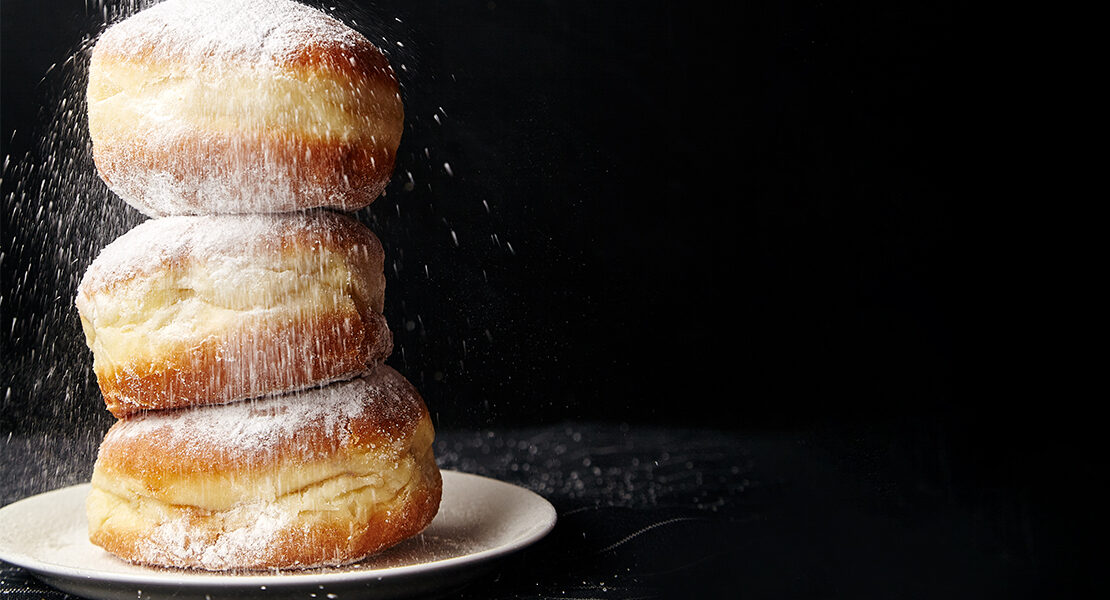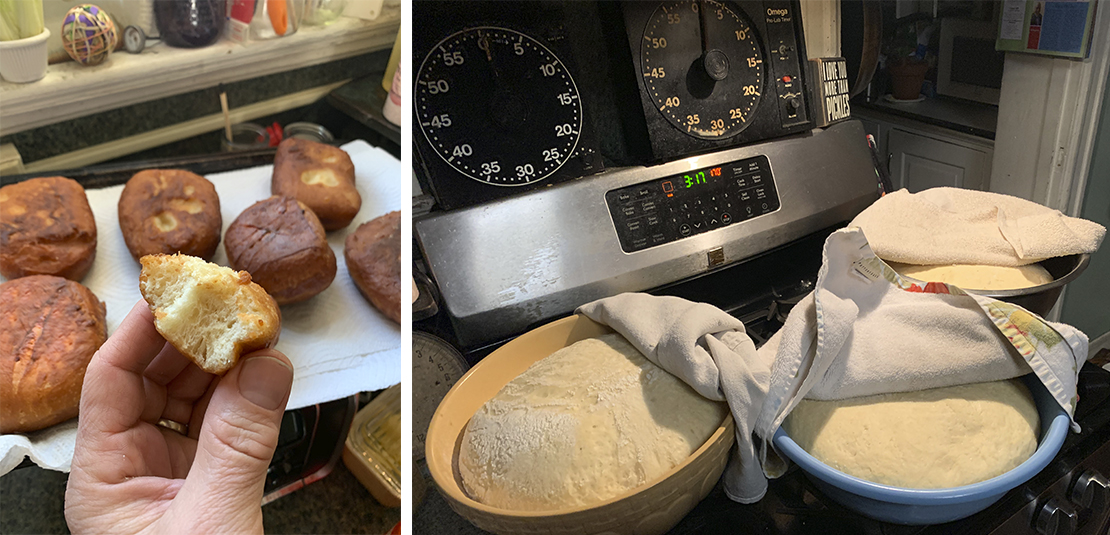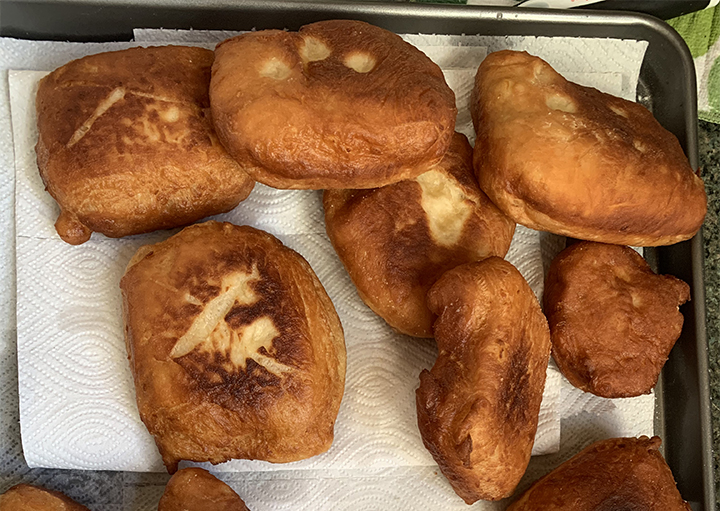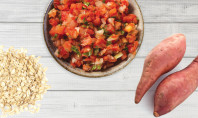From Failure to Fastnachts

The Search For The Perfect Homemade Recipe
“Fastnachts, or Raised Doughnuts” reads the title in the “breads” section of my Mennonite Community Cookbook. After spending two sleepless nights trying to both make and understand fastnachts, I’m not quite sure if it was a title or a question.
My first fastnacht was at a church sale I happened upon more than 15 years ago on a cool February morning. A friendly church lady explained the Pennsylvania Dutch tradition of enjoying this decadent risen doughnut on Fat Tuesday before the austere time of Lent. It’s at the same time that people in New Orleans are celebrating Carnival. The church lady took pity on my ignorance and sold me a dozen that had not been claimed.
During the subsequent years I always seemed to forget about ordering my raised doughnuts ahead of time until it was Fastnacht Day and thus too late. My partner, Dawn, is Pennsylvania Dutch and for years has told me stories about her grandmother and great grandmother cooking all night to make these creations of love and fat. Dawn and I complained on Fat Tuesday year after year that we couldn’t find the fastnachts that matched our memories and had to settle on some substitute from a grocery store.

The Fastnacht is a traditional Pennsylvania Dutch doughnut. Fastnachts significantly different than the doughnuts that we know from grocery stores and chain establishments. However, these days, even fastnachts that you might find at grocery stores are generally made just like doughnuts: they owe their fluffiness to baking soda. However, traditional fastnachts are a risen baked product made with potatoes and fried in lard.
So that’s when I decided to set out on making my own. On my journey I looked deep into recipes from friends, cookbooks old and new, as well as the internet. I thought I would open up a cookbook and make fastnachts. It wasn’t that simple: everyone had an opinion about them and no one had clear answers. I asked several chefs and elders about their experience and opinions. I decided that a traditional fastnacht needed a few key elements to be traditional: they needed to have potato in the recipe, they must be risen without using baking soda, and they should be scored with an “X” on top. The more that we talked about fastnachts, the only consensus I could get from everyone was that once I mastered fastnachts, they wanted them.
I ended up making a batch after finding most of the elements I was looking for in a recipe from The Cooking Channel. I knew it didn’t have acid that Chef Beth Raynock of Local Mama Catering said was crucial to the success of the fastnacht, but I needed a baseline. What I did recognize in The Cooking Channel’s recipe was an initial preferment. Chef/owner Shawn Doyle of the Savory Grille taught me that the preferment is a time to jump start the yeast activity and create complexity in your bread.
People have been asking me, “why would you go through all the trouble of making fastnachts?” I make them because they are beautiful. The fastnacht embodies so many things that are bound to the nature of homemade bread in my mind. They are a time intensive creation made with love, which connects us to history—in an edible and quite delicious form.
 The Perfect Fastnacht Recipe
The Perfect Fastnacht Recipe
Ingredients
2 Idaho potatoes (about 1 pound), peeled and quartered
Salt
1 1/2 cups white granulated sugar, plus more for coating
Two 1/4-ounce packages active dry yeast
2 eggs, beaten
2/3 cup unsalted butter (5 ounces), melted
6 cups all-purpose flour, plus more for dusting
Vegetable oil, for frying
Molasses, for serving, optional
Directions
Place the potatoes in a medium saucepan, cover with cold water by 2 inches and season generously with salt. Bring to a boil over high heat, then lower the heat to maintain a gentle simmer and cook until very tender, about 15 minutes. Reserve 1 1/2 cups of the potato cooking water. Drain and mash the potatoes until smooth. Set the mashed potatoes aside and cool slightly.
In a medium bowl, stir together the mashed potatoes, reserved potato cooking water, sugar, and yeast. Cover with a tea towel and let the mixture rise for 20 minutes; it will look foamy.
Using a sieve, strain the mixture into a large bowl, smoothing out any lumps. Stir in the eggs and melted butter. Stir 5 cups of the flour, one cup at a time, until a dough starts to form. Gently knead the remaining 1 cup of flour in until the dough pulls away from the sides of the bowl and forms a large ball. Cover with a tea towel and put in a warm place to rise for 3 hours.
Dust some flour onto a baking sheet. On a well-floured surface, roll out the dough to 1/2-inch thick. Using a 3-inch cookie cutter, cut out the doughnuts and set on the prepared baking sheet. Cover lightly with a tea towel, and let rise for 30 minutes.
Line a baking sheet with a split paper bag. In a deep fryer or Dutch oven, pour enough oil to fill no more than halfway up the side. Heat the oil until a deep-frying thermometer inserted in the oil reaches 365 degrees F.
Gently place the doughnuts into the oil, two at a time. Cook until golden brown, about 2 minutes per side. Transfer the doughnuts to the prepared baking sheet to absorb some of the oil. Place the doughnuts in the remaining paper bag with a heaping spoonful of sugar and shake gently until the doughnuts are thoroughly coated. You may leave some plain to slice in half and spread with molasses if using. Serve immediately.
YIELD: 3 DOZEN
Source: cookingchanneltv.com












